Guile Wu
MoVieDrive: Multi-Modal Multi-View Urban Scene Video Generation
Aug 20, 2025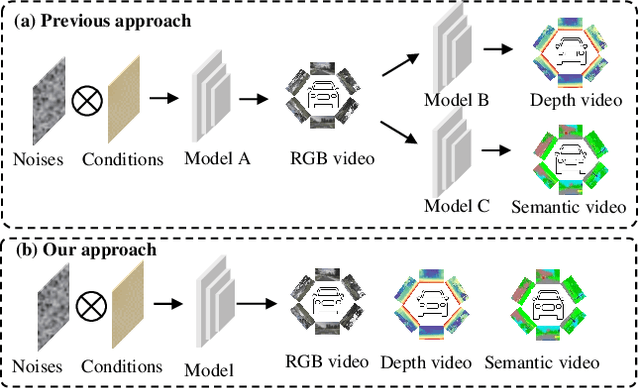
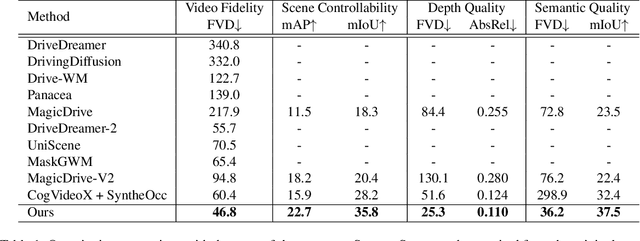
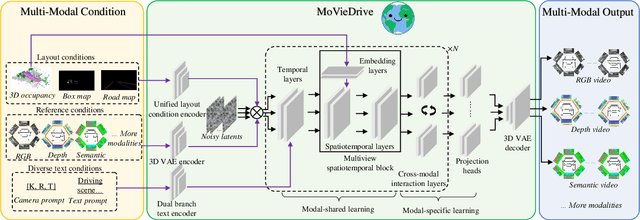

Abstract:Video generation has recently shown superiority in urban scene synthesis for autonomous driving. Existing video generation approaches to autonomous driving primarily focus on RGB video generation and lack the ability to support multi-modal video generation. However, multi-modal data, such as depth maps and semantic maps, are crucial for holistic urban scene understanding in autonomous driving. Although it is feasible to use multiple models to generate different modalities, this increases the difficulty of model deployment and does not leverage complementary cues for multi-modal data generation. To address this problem, in this work, we propose a novel multi-modal multi-view video generation approach to autonomous driving. Specifically, we construct a unified diffusion transformer model composed of modal-shared components and modal-specific components. Then, we leverage diverse conditioning inputs to encode controllable scene structure and content cues into the unified diffusion model for multi-modal multi-view video generation. In this way, our approach is capable of generating multi-modal multi-view driving scene videos in a unified framework. Our experiments on the challenging real-world autonomous driving dataset, nuScenes, show that our approach can generate multi-modal multi-view urban scene videos with high fidelity and controllability, surpassing the state-of-the-art methods.
UniGaussian: Driving Scene Reconstruction from Multiple Camera Models via Unified Gaussian Representations
Nov 22, 2024



Abstract:Urban scene reconstruction is crucial for real-world autonomous driving simulators. Although existing methods have achieved photorealistic reconstruction, they mostly focus on pinhole cameras and neglect fisheye cameras. In fact, how to effectively simulate fisheye cameras in driving scene remains an unsolved problem. In this work, we propose UniGaussian, a novel approach that learns a unified 3D Gaussian representation from multiple camera models for urban scene reconstruction in autonomous driving. Our contributions are two-fold. First, we propose a new differentiable rendering method that distorts 3D Gaussians using a series of affine transformations tailored to fisheye camera models. This addresses the compatibility issue of 3D Gaussian splatting with fisheye cameras, which is hindered by light ray distortion caused by lenses or mirrors. Besides, our method maintains real-time rendering while ensuring differentiability. Second, built on the differentiable rendering method, we design a new framework that learns a unified Gaussian representation from multiple camera models. By applying affine transformations to adapt different camera models and regularizing the shared Gaussians with supervision from different modalities, our framework learns a unified 3D Gaussian representation with input data from multiple sources and achieves holistic driving scene understanding. As a result, our approach models multiple sensors (pinhole and fisheye cameras) and modalities (depth, semantic, normal and LiDAR point clouds). Our experiments show that our method achieves superior rendering quality and fast rendering speed for driving scene simulation.
VQA-Diff: Exploiting VQA and Diffusion for Zero-Shot Image-to-3D Vehicle Asset Generation in Autonomous Driving
Jul 10, 2024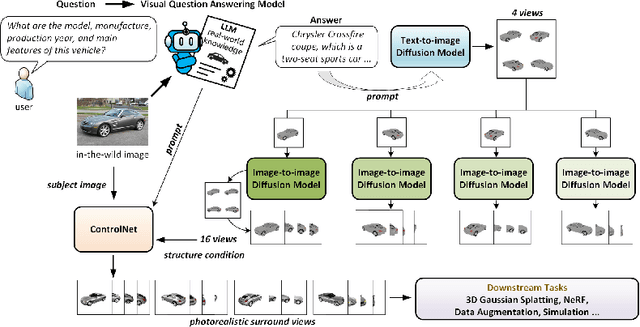
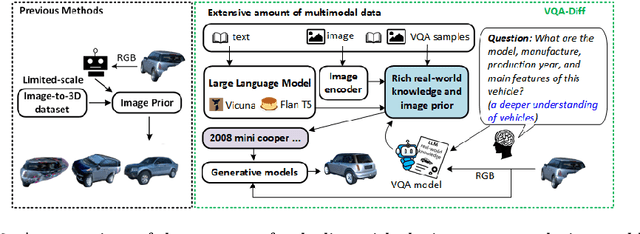


Abstract:Generating 3D vehicle assets from in-the-wild observations is crucial to autonomous driving. Existing image-to-3D methods cannot well address this problem because they learn generation merely from image RGB information without a deeper understanding of in-the-wild vehicles (such as car models, manufacturers, etc.). This leads to their poor zero-shot prediction capability to handle real-world observations with occlusion or tricky viewing angles. To solve this problem, in this work, we propose VQA-Diff, a novel framework that leverages in-the-wild vehicle images to create photorealistic 3D vehicle assets for autonomous driving. VQA-Diff exploits the real-world knowledge inherited from the Large Language Model in the Visual Question Answering (VQA) model for robust zero-shot prediction and the rich image prior knowledge in the Diffusion model for structure and appearance generation. In particular, we utilize a multi-expert Diffusion Models strategy to generate the structure information and employ a subject-driven structure-controlled generation mechanism to model appearance information. As a result, without the necessity to learn from a large-scale image-to-3D vehicle dataset collected from the real world, VQA-Diff still has a robust zero-shot image-to-novel-view generation ability. We conduct experiments on various datasets, including Pascal 3D+, Waymo, and Objaverse, to demonstrate that VQA-Diff outperforms existing state-of-the-art methods both qualitatively and quantitatively.
Learning Effective NeRFs and SDFs Representations with 3D Generative Adversarial Networks for 3D Object Generation: Technical Report for ICCV 2023 OmniObject3D Challenge
Sep 28, 2023



Abstract:In this technical report, we present a solution for 3D object generation of ICCV 2023 OmniObject3D Challenge. In recent years, 3D object generation has made great process and achieved promising results, but it remains a challenging task due to the difficulty of generating complex, textured and high-fidelity results. To resolve this problem, we study learning effective NeRFs and SDFs representations with 3D Generative Adversarial Networks (GANs) for 3D object generation. Specifically, inspired by recent works, we use the efficient geometry-aware 3D GANs as the backbone incorporating with label embedding and color mapping, which enables to train the model on different taxonomies simultaneously. Then, through a decoder, we aggregate the resulting features to generate Neural Radiance Fields (NeRFs) based representations for rendering high-fidelity synthetic images. Meanwhile, we optimize Signed Distance Functions (SDFs) to effectively represent objects with 3D meshes. Besides, we observe that this model can be effectively trained with only a few images of each object from a variety of classes, instead of using a great number of images per object or training one model per class. With this pipeline, we can optimize an effective model for 3D object generation. This solution is one of the final top-3-place solutions in the ICCV 2023 OmniObject3D Challenge.
Federated Zero-Shot Learning with Mid-Level Semantic Knowledge Transfer
Aug 29, 2022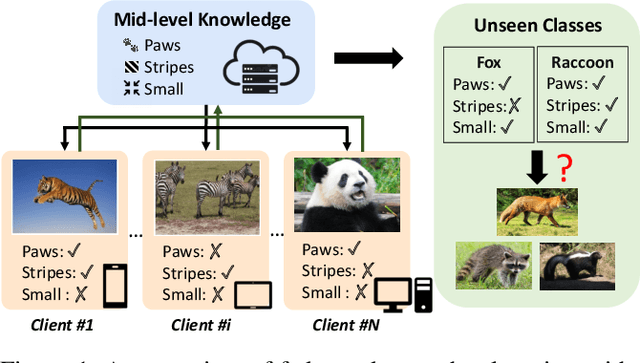
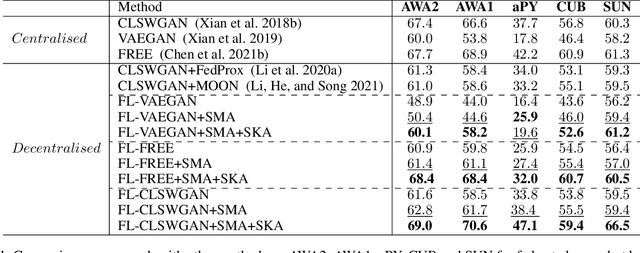
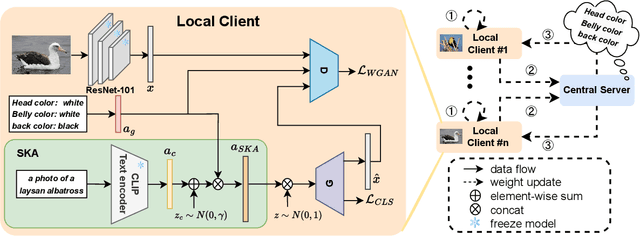

Abstract:Conventional centralised deep learning paradigms are not feasible when data from different sources cannot be shared due to data privacy or transmission limitation. To resolve this problem, federated learning has been introduced to transfer knowledge across multiple sources (clients) with non-shared data while optimising a globally generalised central model (server). Existing federated learning paradigms mostly focus on transferring holistic high-level knowledge (such as class) across models, which are closely related to specific objects of interest so may suffer from inverse attack. In contrast, in this work, we consider transferring mid-level semantic knowledge (such as attribute) which is not sensitive to specific objects of interest and therefore is more privacy-preserving and scalable. To this end, we formulate a new Federated Zero-Shot Learning (FZSL) paradigm to learn mid-level semantic knowledge at multiple local clients with non-shared local data and cumulatively aggregate a globally generalised central model for deployment. To improve model discriminative ability, we propose to explore semantic knowledge augmentation from external knowledge for enriching the mid-level semantic space in FZSL. Extensive experiments on five zeroshot learning benchmark datasets validate the effectiveness of our approach for optimising a generalisable federated learning model with mid-level semantic knowledge transfer.
Self-Supervised Consistent Quantization for Fully Unsupervised Image Retrieval
Jun 20, 2022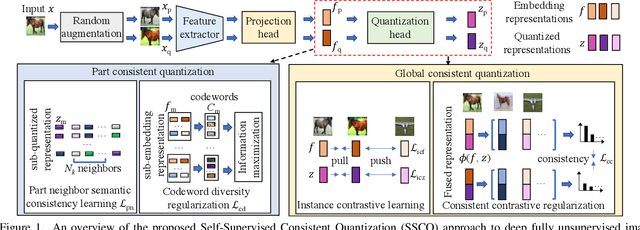
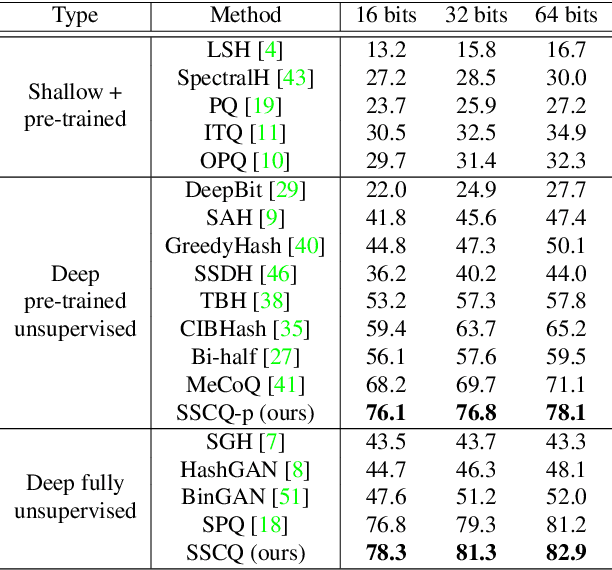
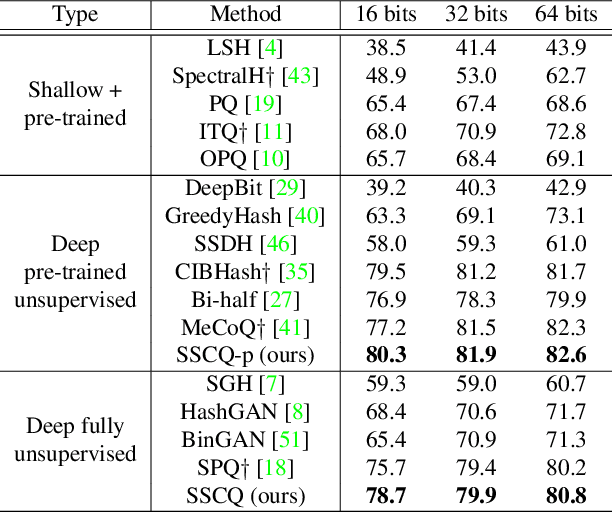
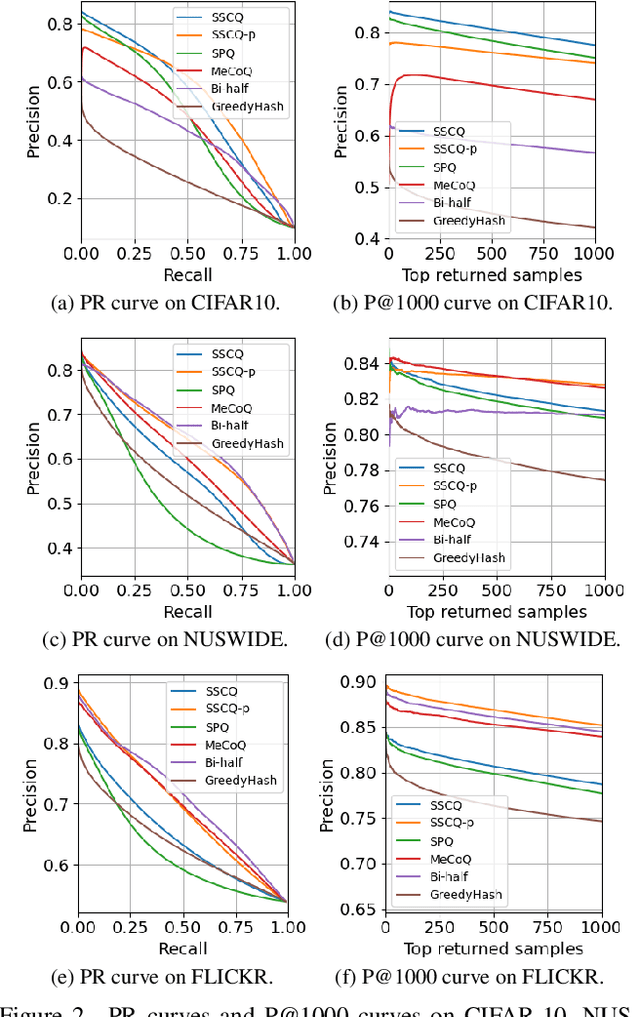
Abstract:Unsupervised image retrieval aims to learn an efficient retrieval system without expensive data annotations, but most existing methods rely heavily on handcrafted feature descriptors or pre-trained feature extractors. To minimize human supervision, recent advance proposes deep fully unsupervised image retrieval aiming at training a deep model from scratch to jointly optimize visual features and quantization codes. However, existing approach mainly focuses on instance contrastive learning without considering underlying semantic structure information, resulting in sub-optimal performance. In this work, we propose a novel self-supervised consistent quantization approach to deep fully unsupervised image retrieval, which consists of part consistent quantization and global consistent quantization. In part consistent quantization, we devise part neighbor semantic consistency learning with codeword diversity regularization. This allows to discover underlying neighbor structure information of sub-quantized representations as self-supervision. In global consistent quantization, we employ contrastive learning for both embedding and quantized representations and fuses these representations for consistent contrastive regularization between instances. This can make up for the loss of useful representation information during quantization and regularize consistency between instances. With a unified learning objective of part and global consistent quantization, our approach exploits richer self-supervision cues to facilitate model learning. Extensive experiments on three benchmark datasets show the superiority of our approach over the state-of-the-art methods.
Learning Unbiased Transferability for Domain Adaptation by Uncertainty Modeling
Jun 02, 2022
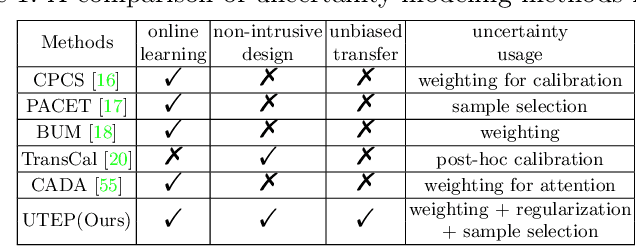
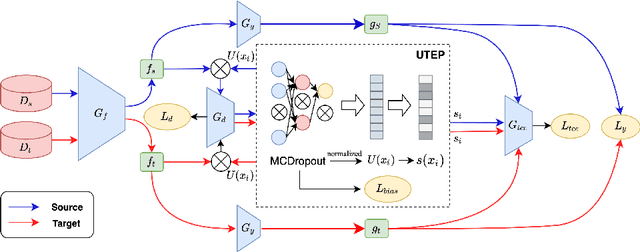
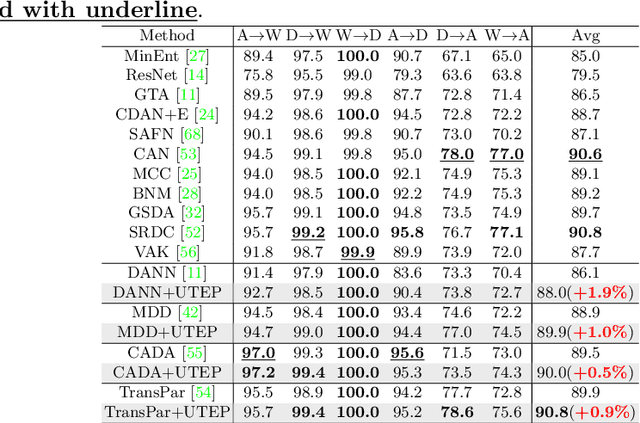
Abstract:Domain adaptation (DA) aims to transfer knowledge learned from a labeled source domain to an unlabeled or a less labeled but related target domain. Ideally, the source and target distributions should be aligned to each other equally to achieve unbiased knowledge transfer. However, due to the significant imbalance between the amount of annotated data in the source and target domains, usually only the target distribution is aligned to the source domain, leading to adapting unnecessary source specific knowledge to the target domain, i.e., biased domain adaptation. To resolve this problem, in this work, we delve into the transferability estimation problem in domain adaptation and propose a non-intrusive Unbiased Transferability Estimation Plug-in (UTEP) by modeling the uncertainty of a discriminator in adversarial-based DA methods to optimize unbiased transfer. We theoretically analyze the effectiveness of the proposed approach to unbiased transferability learning in DA. Furthermore, to alleviate the impact of imbalanced annotated data, we utilize the estimated uncertainty for pseudo label selection of unlabeled samples in the target domain, which helps achieve better marginal and conditional distribution alignments between domains. Extensive experimental results on a high variety of DA benchmark datasets show that the proposed approach can be readily incorporated into various adversarial-based DA methods, achieving state-of-the-art performance.
Decentralised Person Re-Identification with Selective Knowledge Aggregation
Oct 21, 2021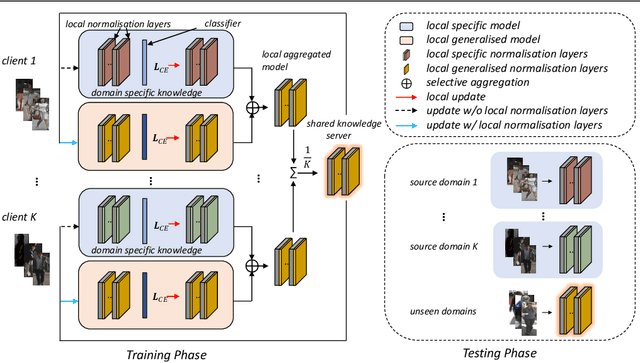
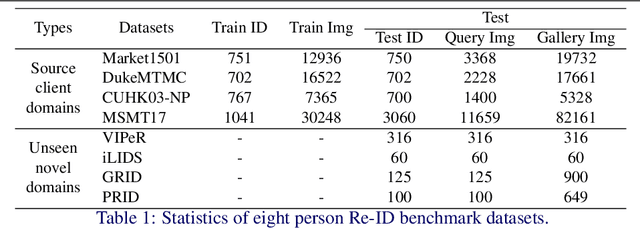
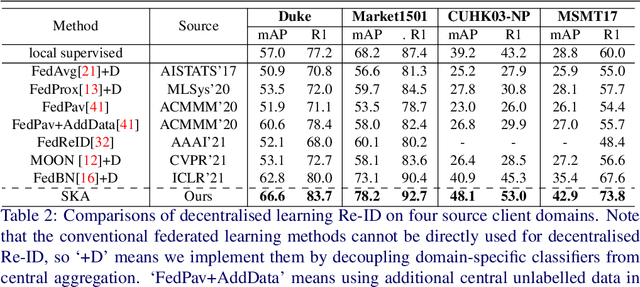

Abstract:Existing person re-identification (Re-ID) methods mostly follow a centralised learning paradigm which shares all training data to a collection for model learning. This paradigm is limited when data from different sources cannot be shared due to privacy concerns. To resolve this problem, two recent works have introduced decentralised (federated) Re-ID learning for constructing a globally generalised model (server)without any direct access to local training data nor shared data across different source domains (clients). However, these methods are poor on how to adapt the generalised model to maximise its performance on individual client domain Re-ID tasks having different Re-ID label spaces, due to a lack of understanding of data heterogeneity across domains. We call this poor 'model personalisation'. In this work, we present a new Selective Knowledge Aggregation approach to decentralised person Re-ID to optimise the trade-off between model personalisation and generalisation. Specifically, we incorporate attentive normalisation into the normalisation layers in a deep ReID model and propose to learn local normalisation layers specific to each domain, which are decoupled from the global model aggregation in federated Re-ID learning. This helps to preserve model personalisation knowledge on each local client domain and learn instance-specific information. Further, we introduce a dual local normalisation mechanism to learn generalised normalisation layers in each local model, which are then transmitted to the global model for central aggregation. This facilitates selective knowledge aggregation on the server to construct a global generalised model for out-of-the-box deployment on unseen novel domains. Extensive experiments on eight person Re-ID datasets show that the proposed approach to decentralised Re-ID significantly outperforms the state-of-the-art decentralised methods.
Decentralised Learning from Independent Multi-Domain Labels for Person Re-Identification
Jun 07, 2020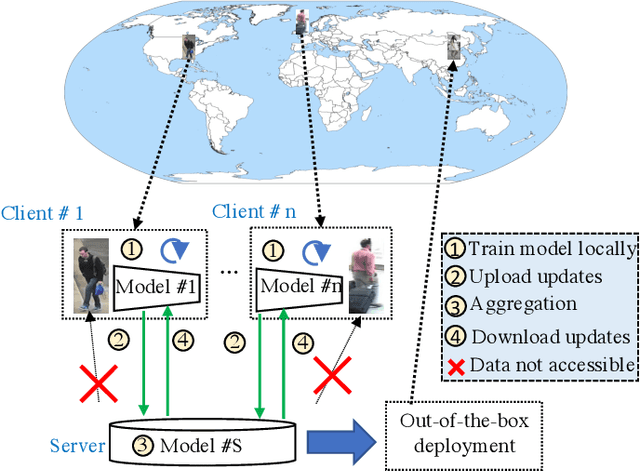
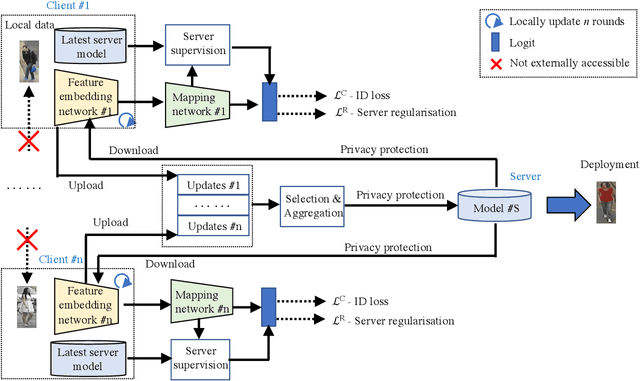
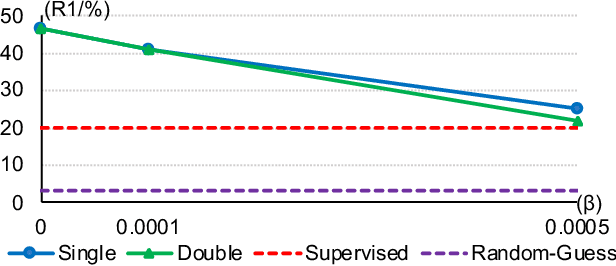
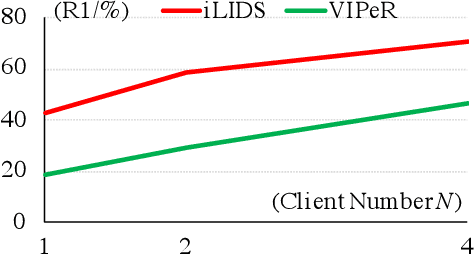
Abstract:Deep learning has been successful for many computer vision tasks due to the availability of shared and centralised large sized training data. However, increasing awareness of privacy concerns poses new challenges to deep learning, especially for human subject related recognition such as person re-identification (Re-ID). In this work, we solve the Re-ID problem by decentralised model learning from non-shared private training data distributed at multiple user cites of independent multi-domain labels. We propose a novel paradigm called Federated Person Re-Identification (FedReID) to construct a generalisable Re-ID model (a central server) by simultaneously learning collaboratively from multiple privacy-preserved local models (local clients). Each local client learns domain-specific local knowledge from its own set of labels independent from all the other clients (each client has its own non-shared independent labels), while the central server selects and aggregates transferrable local updates to accumulate domain-generic knowledge (a general feature embedding model) without sharing local data therefore inherently protecting privacy. Extensive experiments on 11 Re-ID benchmarks demonstrate the superiority of FedReID against the state-of-the-art Re-ID methods.
Peer Collaborative Learning for Online Knowledge Distillation
Jun 07, 2020

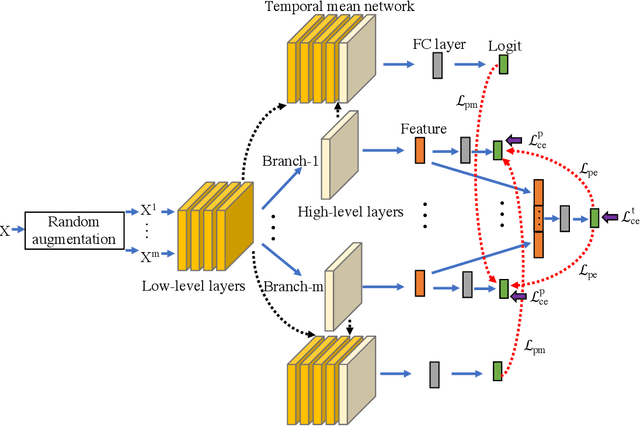

Abstract:Traditional knowledge distillation uses a two-stage training strategy to transfer knowledge from a high-capacity teacher model to a smaller student model, which relies heavily on the pre-trained teacher. Recent online knowledge distillation alleviates this limitation by collaborative learning, mutual learning and online ensembling, following a one-stage end-to-end training strategy. However, collaborative learning and mutual learning fail to construct an online high-capacity teacher, whilst online ensembling ignores the collaboration among branches and its logit summation impedes the further optimisation of the ensemble teacher. In this work, we propose a novel Peer Collaborative Learning method for online knowledge distillation. Specifically, we employ a multi-branch network (each branch is a peer) and assemble the features from peers with an additional classifier as the peer ensemble teacher to transfer knowledge from the high-capacity teacher to peers and to further optimise the ensemble teacher. Meanwhile, we employ the temporal mean model of each peer as the peer mean teacher to collaboratively transfer knowledge among peers, which facilitates to optimise a more stable model and alleviate the accumulation of training error among peers. Integrating them into a unified framework takes full advantage of online ensembling and network collaboration for improving the quality of online distillation. Extensive experiments on CIFAR-10, CIFAR-100 and ImageNet show that the proposed method not only significantly improves the generalisation capability of various backbone networks, but also outperforms the state-of-the-art alternative methods.
 Add to Chrome
Add to Chrome Add to Firefox
Add to Firefox Add to Edge
Add to Edge